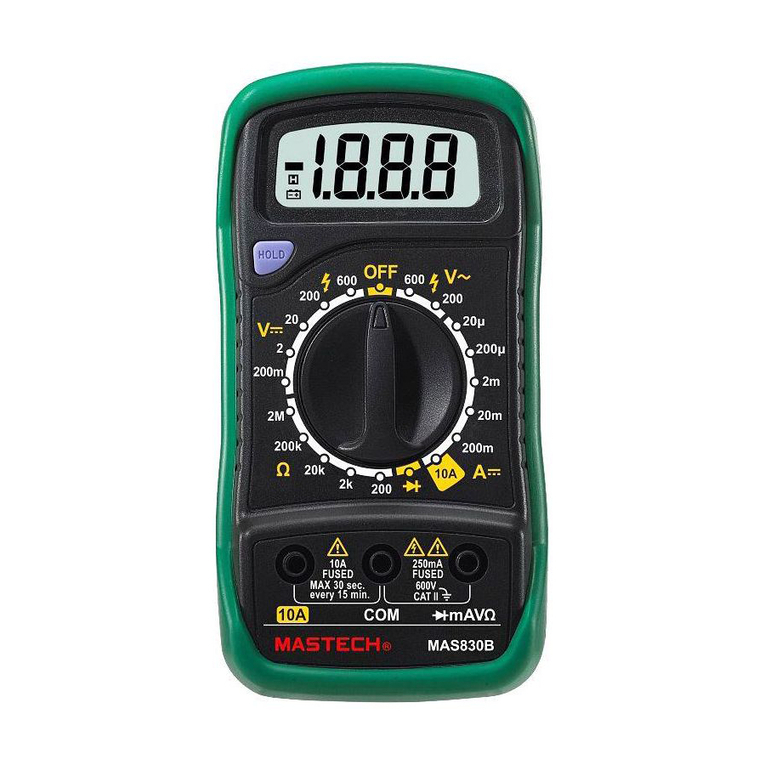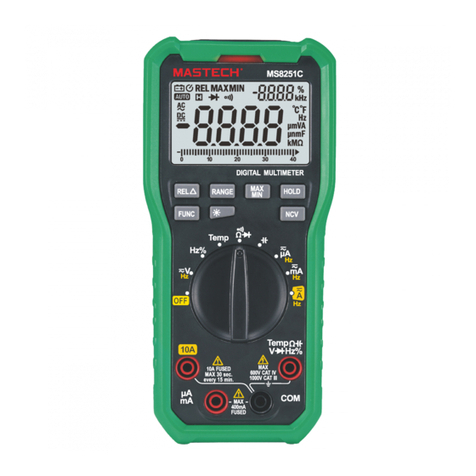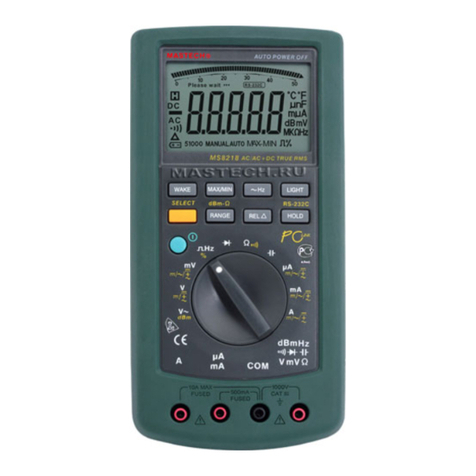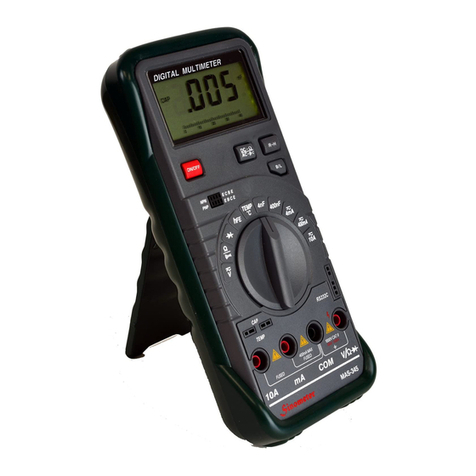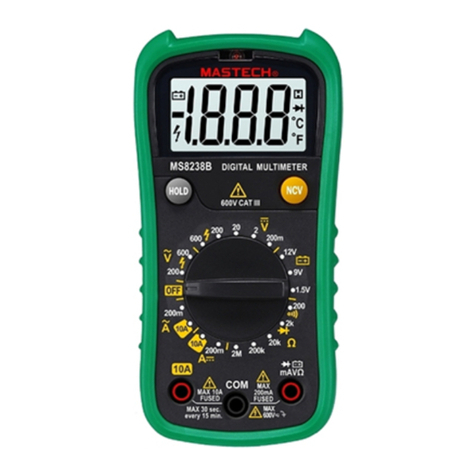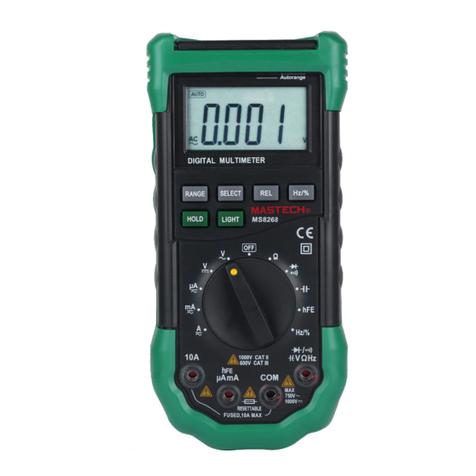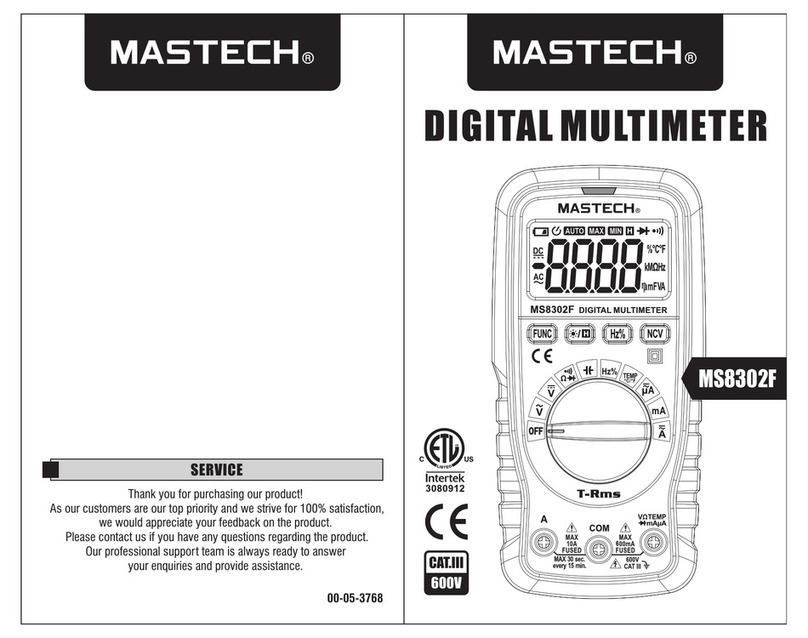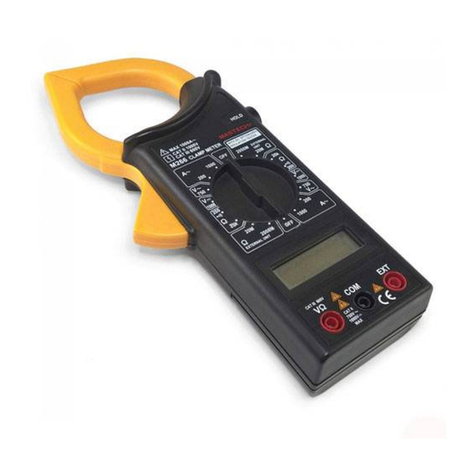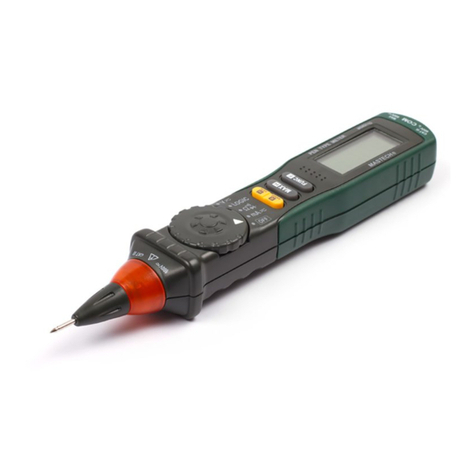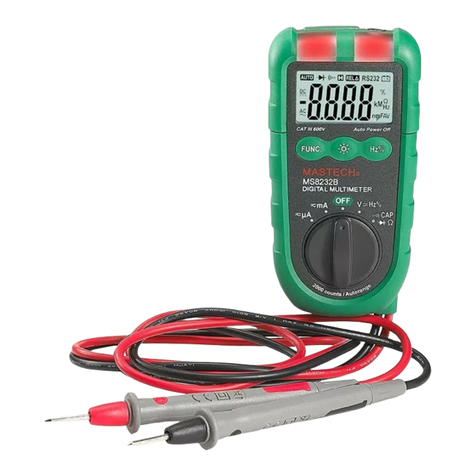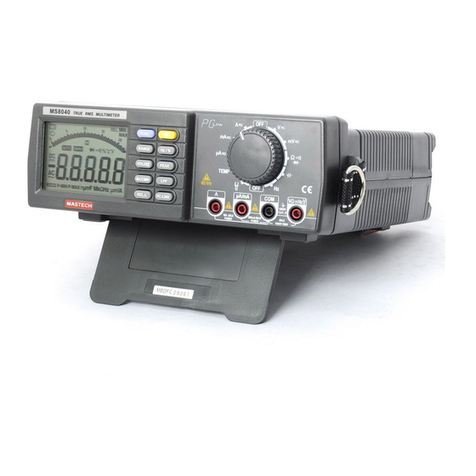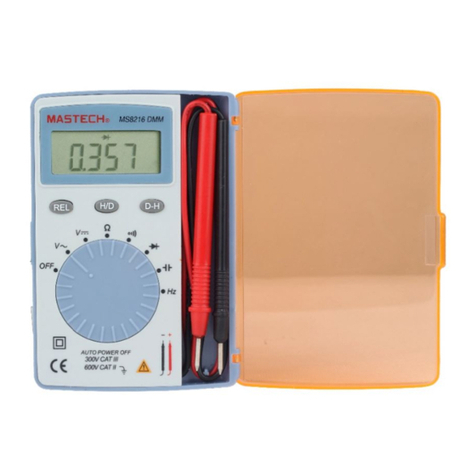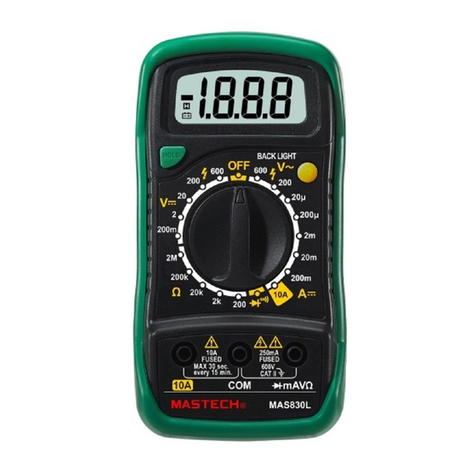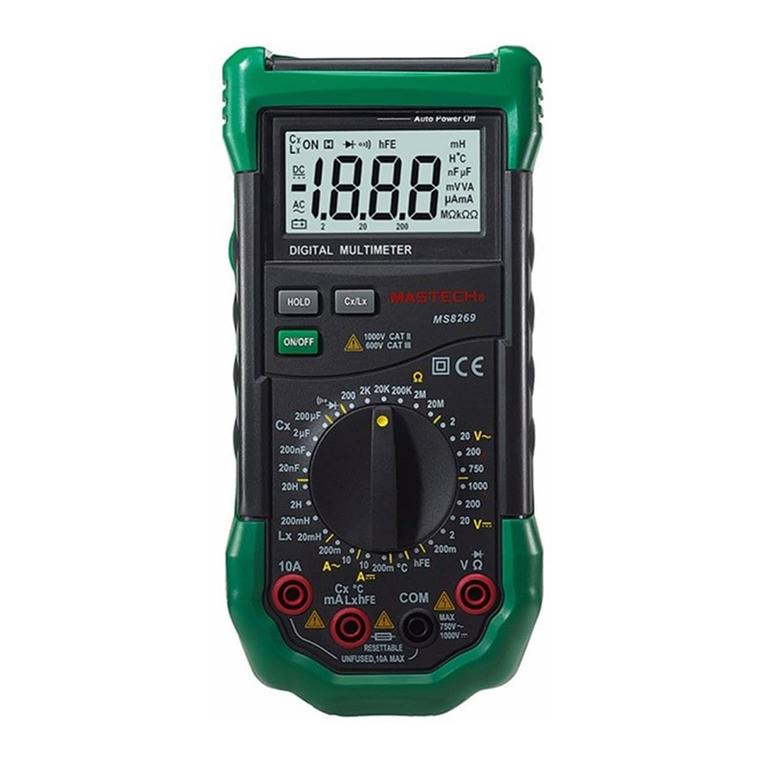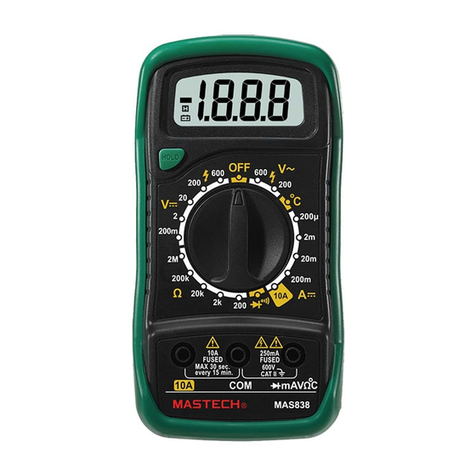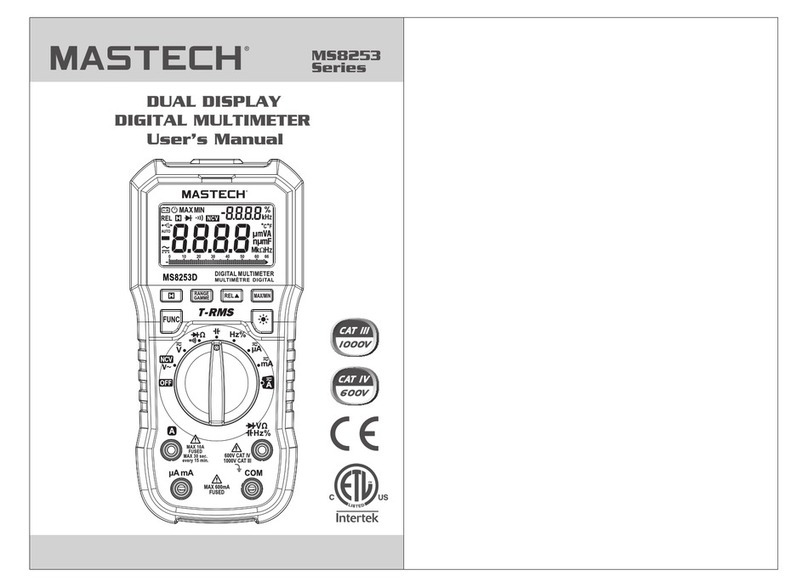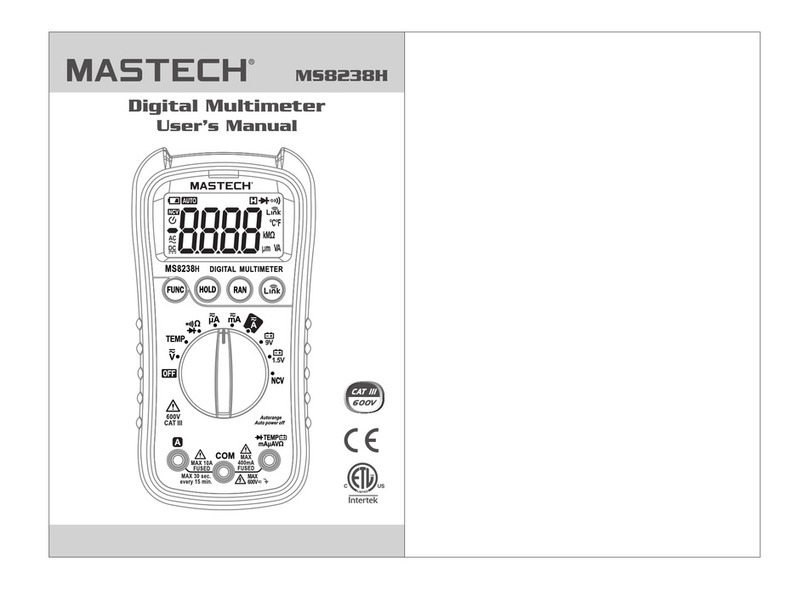
03 0 4
1.4 Precautions
1.4.1 Do not adjust or repair the meter by attempting to
remove the rear case. Such operation should only
be performed by a technician who fully understands
the meter and the electric shock risk involved.
1.4.2 Remove the test probes from the circuit under test
before opening the battery cover of the meter.
1.4.3 To avoid any electric shock caused by erroneous
readings, replace the batteries immediately when
1.2.11 Do not use the meter near explosive gases,
steam or dirt.
1.2.12 Stop using the meter if any abnormalities or
faults are noticed.
1.2.13 Do not use the meter unless its rear case is
securely fastened in its original position.
1.2.14 Do not store or use the meter in areas exposed
to direct sunlight, high temperatures or high
humidity.
1.3 Symbols
Important safety information; refer to the operation
manual
Dangerous voltage may be present.
CAT III – over-voltage (installation) category III, pollution
degree 2 per IEC61010-1, referring to the level of impulse
withstand voltage protection provided.
Compliance with European Union (EU) directives
Ground
Double insulation (protection class II)
Fuse
the“ ” symbol appears on the LCD.
1.4.4 To avoid fire hazards, the replacement fuse must
meet the specified voltage and current ratings of F
10A/500V and F200mA/1000V (quick acting).
1.4.5 Use wet cloth and mild detergent to clean the
meter; do not use abrasives or solvents.
1.4.6 Turn to OFF switch off the power when is not in use.
1.4.7 Remove the batteries to avoid damages to the
meter if it will idle for a long time.
1.4.8 Using this appliance in an environment with a
strong radiated radio-frequency electromagnetic
field (approximately 3V/m ),may influence its
measuring accuracy. The measuring resul can be
strongly deviating from the actual value.
2. Description
- The meter is a portable specialized measuring
instrument with a large digital LCD, as well as a
backlight source for easy reading. The range selector
designed for single-hand operation makes
measurement easy. Overload protection and low
battery indication are provided. It is an ideal
multi-functional instrument with scores of practical
applications for professional, factory, school, amateur
and home use.
- The meter can be used to measure DC and AC voltages
and currents, and resistances, test circuit continuity
and diodes, detect phone line mode, judge break points
in cable lines, track the routing of cable lines, and detect
network cable integrity and non-contact voltage.
- The meter is provided with both automatic/manual
ranges.
- The meter is provided with the automatic shutdown
function.
